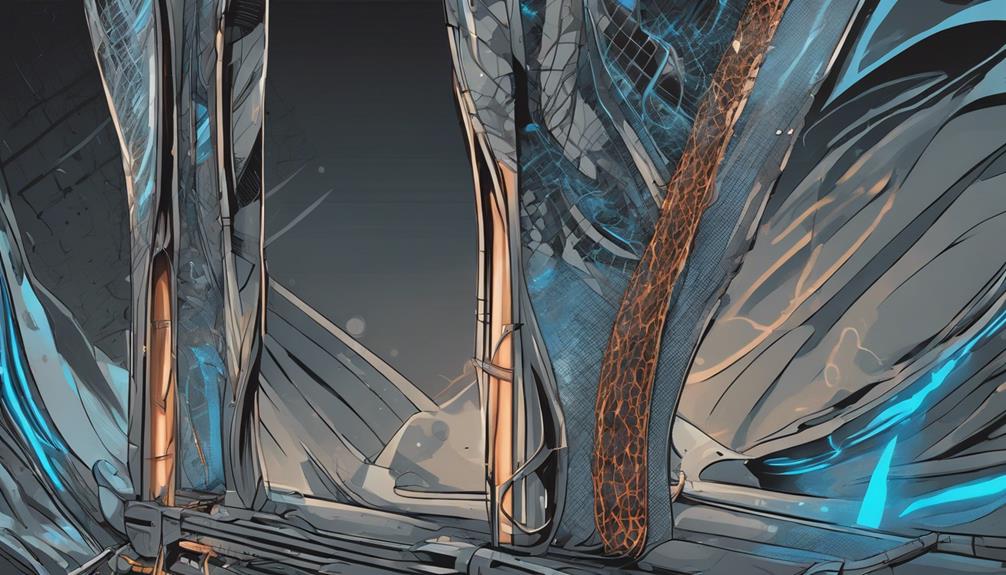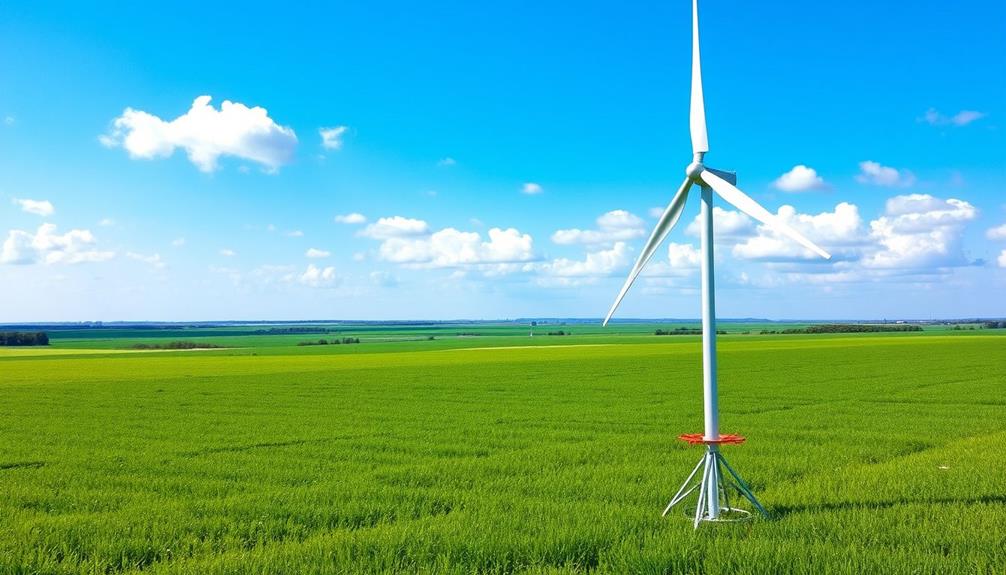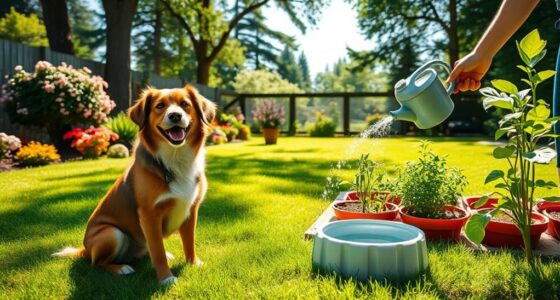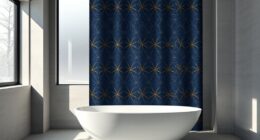I've learned that wind turbine innovation relies on a strategic combination of materials that provide strength, resilience, and efficiency. From the tower's foundation to the blade's edge, each component plays an essential role in harnessing wind power and converting it into electricity. Steel and concrete form a robust tower, while copper wiring and magnetic alloys enable efficient energy conversion. Composite materials like fiberglass and carbon fiber are used in nacelle design, and epoxy resin binds blade layers together. It's fascinating to see how these materials work together to generate power – and there's more to discover about how they make it all possible.
Key Takeaways
- Steel and concrete form a robust foundation for wind turbines, leveraging their strength and resilience to withstand harsh environmental conditions.
- Copper wiring enables efficient power transmission, while magnetic alloys facilitate energy conversion within the generator.
- Composite materials like fiberglass, carbon fiber, and Kevlar are used in nacelle design for strength, durability, and reduced weight.
- Epoxy resin, balsa wood, and honeycomb structures are combined to create lightweight yet robust wind turbine blades.
- Advanced materials like insulating materials, gel coatings, and edge protection systems ensure the longevity and efficiency of wind turbine components.
Wind Turbine Tower Construction
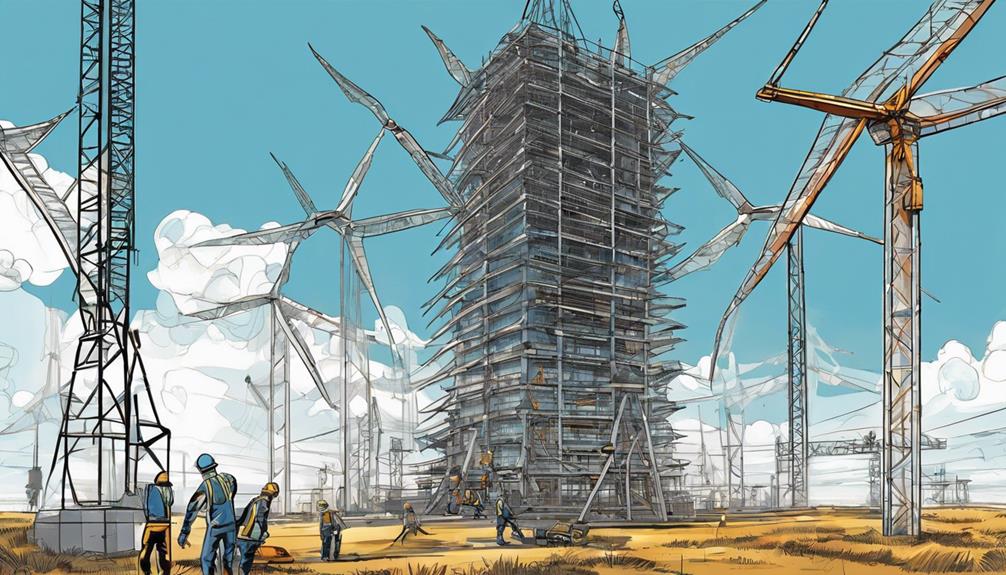
As I investigate the construction of wind turbine towers, I find that steel and concrete are the go-to materials, thanks to their exceptional strength, resilience, and ability to withstand the harshest environmental conditions.
These materials form the backbone of the tower, providing a solid foundation for the turbine's massive blades and generator. Steel's high tensile strength and concrete's compressive strength make them an ideal combination for supporting the weight and stress of the turbine.
Additionally, their robustness ensures that the tower can withstand harsh weather conditions, such as strong winds, extreme temperatures, and corrosive environments.
Generator Components and Materials
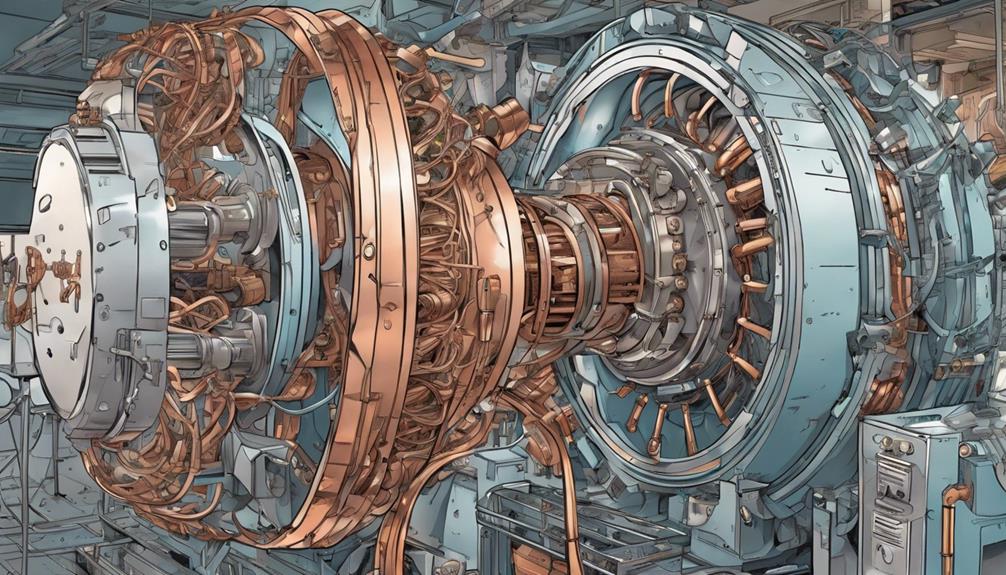
Moving on to the heart of the wind turbine, I find that the generator's components rely on a combination of materials, including copper wiring, magnetic alloys, and steel, to efficiently convert mechanical energy into electrical energy. These materials work in harmony to secure reliable and efficient power transmission.
Here are the key materials used in wind turbine generators:
- Copper wiring for efficient power transmission
- Magnetic alloys, such as neodymium-based permanent magnets, for efficient energy conversion
- Steel for generator housing and structural components
- Insulating materials to protect components from environmental factors
- Electronic components, including sensors, controllers, and converters, for energy management
Foundation and Anchoring Systems
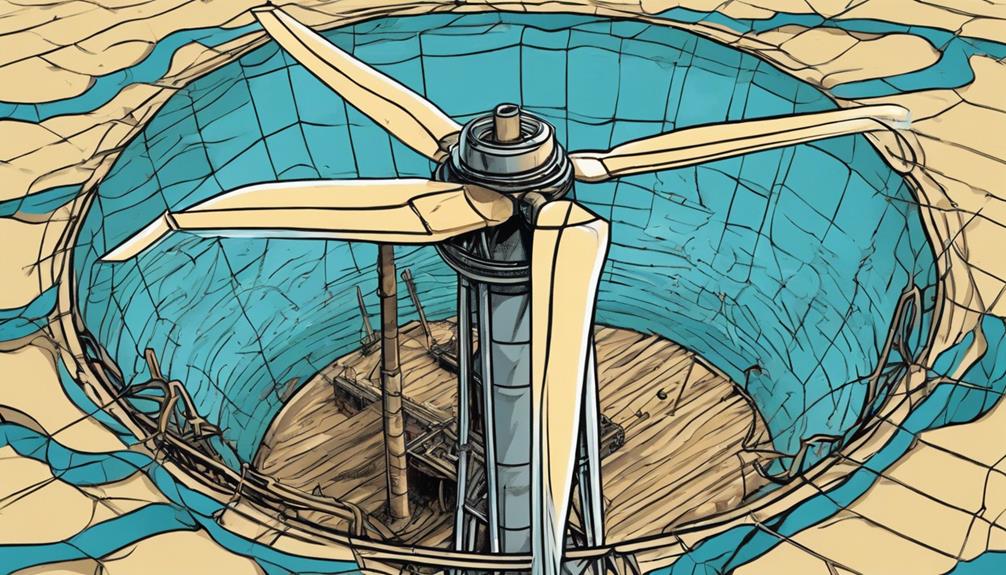
I explore the base of the wind turbine, where a sturdy foundation and anchoring system are vital to withstanding the forces of nature and ensuring the turbine's stability and efficiency.
The foundation is typically made of a concrete mixture, which provides a solid and durable base for the turbine. Steel reinforcement is added to increase the tensile strength of the foundation, allowing it to withstand harsh environmental conditions. Anchor bolts secure the tower to the foundation, providing stability against wind forces.
Additionally, gravel or crushed stone is used to improve drainage and prevent soil erosion. A well-designed foundation and anchoring system are essential to the overall performance and longevity of the wind turbine.
Nacelle Design and Components
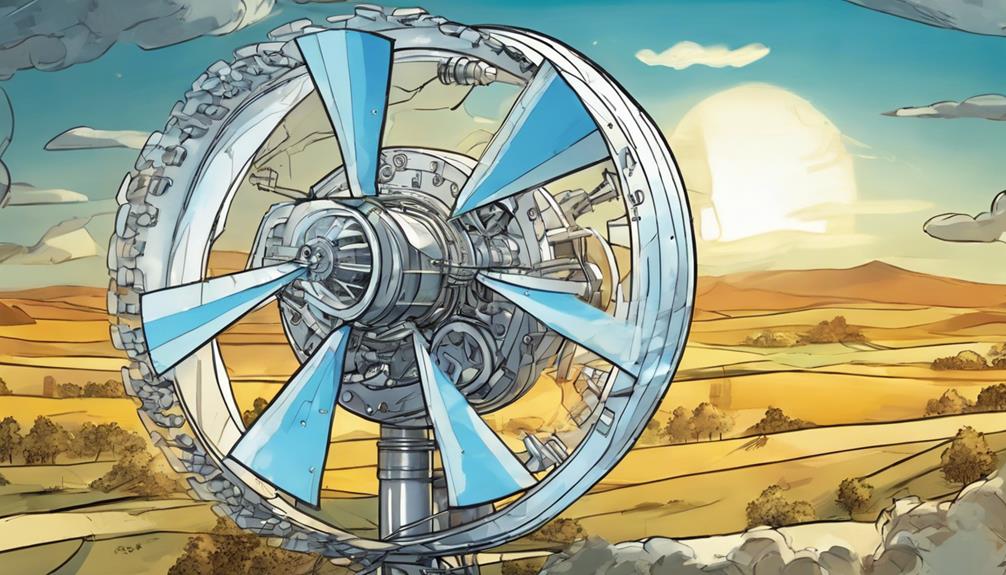
Designing the housing, the container that encloses the turbine's essential components, requires careful consideration of materials and construction to ensure efficient energy production and long-term reliability. As I explore the world of housing design, I'm struck by the significance of selecting the right materials.
- Composite materials like fiberglass, carbon fiber, and Kevlar are popular for housing construction due to their strength and lightweight nature.
- Steel and aluminum are also commonly used for the housing structure, offering strength and durability.
- Copper wiring is essential for conducting electricity within the housing.
- Electronic components, including sensors, controllers, and converters, are vital for energy management.
- Insulating materials protect components from environmental factors, ensuring the housing operates smoothly.
Blade Manufacturing Materials
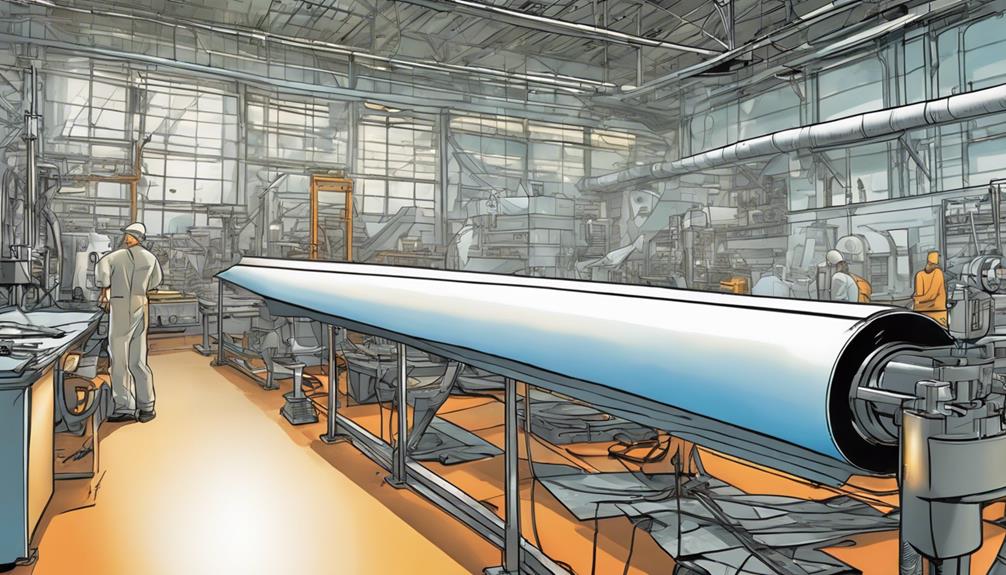
When it comes to crafting wind turbine blades, the selection of materials is vital, as it directly impacts the blade's strength, durability, and overall performance.
As I explore the world of blade manufacturing, I've discovered that epoxy resin plays an important role in binding fiberglass or carbon fiber layers together.
Balsa wood, a lightweight material, is often used as a core in some blade designs, providing a solid foundation.
Honeycomb structures add strength and rigidity to the blade structure, while gel coating protects the blades from environmental factors.
Edge protection is also essential, preventing erosion and damage to the blade tips.
Frequently Asked Questions
What Is the Average Lifespan of Wind Turbine Components?
I'm often asked about the average lifespan of wind turbine components. Generally, wind turbine blades last around 20-25 years, generators around 15-20 years, and towers can last up to 30 years or more.
Can Wind Turbines Be Constructed Using Recycled Materials?
I'd say yes, wind turbines can be constructed using recycled materials. In fact, recycled steel and concrete are already being used in turbine towers and foundations, reducing waste and environmental impact.
How Do Wind Turbines Withstand Extreme Weather Conditions Like Hurricanes?
I'm curious about how wind turbines withstand extreme weather conditions like hurricanes. To be honest, it's the steel and concrete tower construction, combined with strong anchor bolts, that provides the necessary stability to resist powerful winds.
What Role Do Nanomaterials Play in Wind Turbine Innovation?
"As I gaze up at the towering turbines, I wonder: what's the secret to their strength? Nanomaterials, it turns out, are the unsung heroes, enhancing durability, reducing weight, and increasing energy efficiency in these modern marvels."
Can 3D Printing Be Used to Manufacture Wind Turbine Parts?
I'm excited to explore whether 3D printing can revolutionize wind turbine manufacturing. Yes, it can be used to produce complex parts like blades, nacelles, and generator components, offering reduced weight, increased efficiency, and cost savings.
How Do Different Materials Affect Wind Turbine Efficiency?
The efficiency of wind turbines is greatly impacted by the blades configuration for efficiency. Different materials used for turbine blades, such as carbon fiber or fiberglass, can affect their weight, flexibility, and overall performance. Finding the right material for the blades is crucial for maximizing the turbine’s energy output.
Conclusion
As I conclude this journey into the heart of wind turbine innovation, I'm left in awe of the symphony of materials that harmonize to generate clean energy.
Each component, carefully crafted and precision-engineered, plays its part in a grand orchestra of sustainability.
The result is a majestic dance of strength, durability, and efficiency, set to the rhythm of a greener tomorrow.
